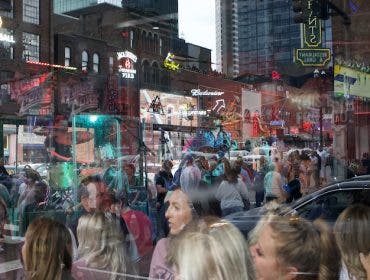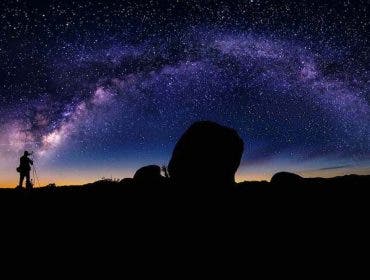When the light gets low and you don’t have a tripod, you need to get a better grip on your camera. Here are a few tips to help you and your camera go steady.
It’s getting dark. You don’t have a tripod. A flash would ruin the scene. You’ve pumped up your digital camera’s ISO as high as you dare and turned on shake reduction. But you still need to hold your camera as steady as possible to avoid shaky shots. Here are half a dozen ways to turn yourself into a human camera support.
1. The Elbow Bender
Raise your left arm, and grab your right shoulder with your left hand. Rest your camera on the bent elbow, push up a bit with your elbow as you push down with your camera. This will work with DSLRs as well as with compact cameras that lack an eye-level finder.
2. The Classic
Hold the camera with your right hand and cradle the lens in the left hand, with both arms held tight against your torso. Inhale, press the shutter release. Exhale. This is the classic camera hold, but it only works with cameras with eye-level finders, such as DSLRs or rangefinders. Recommended if using a long or heavy lens.
3. The Double Grip
Like the classic hold, the double grip only works with cameras that have eye-level finders. Hold the camera to your eye as usual with your right hand. Grab your right hand with your left hand and with both elbows pressed against your body, take a deep breath and shoot. Many find this double-grip hold to be steadier than the grip camera with right and hold lens with left hand technique.
4. The Wall
Lean against a wall, with the closest arm holding the camera and pressing against it. This is almost as steady as a tripod. This will work with eye-level finder cameras as well as with cameras that only have LCD monitors.
5. The Chair Lean (or Tabletop)
Find a chair back or table and lean your elbows against it while holding your camera. Much of the steadiness from the surface you’re leaning on will transfer to the camera.
6. The Strap-on
Use your camera strap to give you leverage and improve stability by looping strap around your right elbow and perhaps your wrist if you don’t have enough tension, and holding camera tight. Combine with the double grip or Elbow Bender for extra stability. This is especially useful when shooting with a camera with an LCD monitor, using a DSLR in Live View mode, or when shooting videos to help smooth out the shakes.
Do you have a creative way to keep your camera steady when there is no tripod available? Leave it in the comments!






